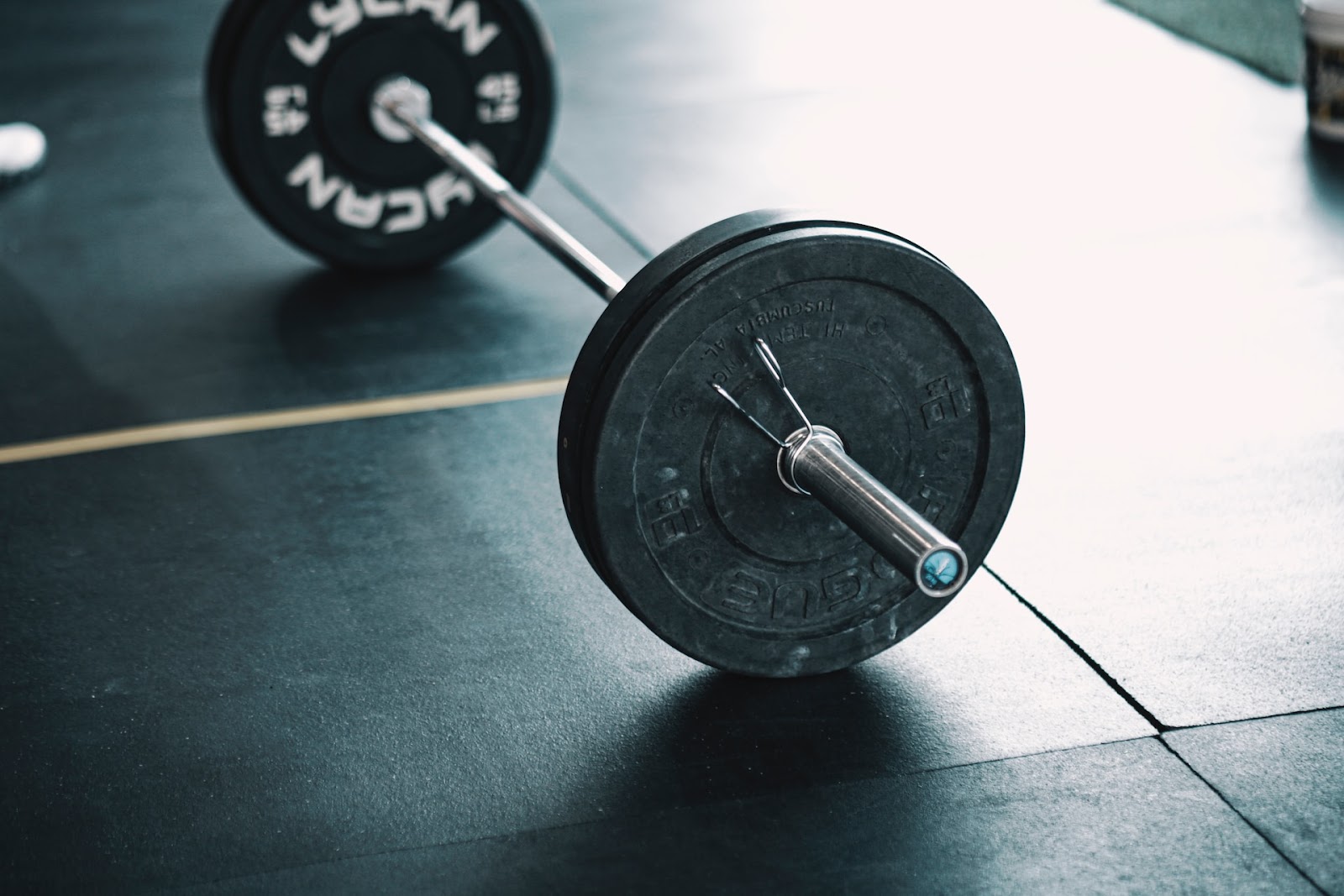How Long is an Olympic Barbell
The Olympic Barbell has a long and fascinating history dating back to the early 20th century. Its current standard length is 7 feet, but this wasn’t always the case. During the early years of weightlifting competitions, different countries used various barbell lengths, ranging from 5 feet to 9 feet. This made it difficult to set world records or compare performances between lifters from different countries. In 1928, the International Weightlifting Federation (IWF) was established to regulate weightlifting competition rules, including the barbell’s length and weight. The standard length was set at 7 feet, and the weight was fixed at 20 kilograms (44 pounds) for men and 15 kilograms (33 pounds) for women.
Today, the Olympic Barbell has remained the same length and weight, with only minor modifications to its design over the years to improve its durability and performance.
Origins of The Barbell
The Olympic Barbell is one of the most recognizable pieces of gym equipment and has been used for centuries. Its origins date back to ancient Greece, where athletes used heavy stones for weight training. Since then, the barbell has evolved into a solid steel bar with discs of different weights that can be used for weight training, powerlifting, and weightlifting.
Let’s take a look back at the history of the Olympic Barbell to learn more about its evolution.
Introduction of Weightlifting as a Competitive Sport
Weightlifting has been an Olympic sport since the first modern Olympic Games were held in 1896. While lifting heavy objects has been part of human culture for millennia, weightlifting as a competitive sport began to take shape during the late 1800s. The barbell, which is a long metal bar with weighted discs attached to each end, was invented in the mid-19th century as a training tool for athletes and soldiers. The first Olympic barbells were made of wood and weighed around 50 pounds. Today’s Olympic barbells are made of steel and weigh 45 pounds for men and 33 pounds for women, with a length of 7 feet and 2 inches.
Over time, weightlifting has become a highly specialized sport, with competitors training specifically to improve their technique in the snatch and clean and jerk, the two lifts contested at the Olympic Games.
Evolution of Barbells
The barbell is an essential piece of equipment in strength training, and it has evolved over the years to become what we know today as an Olympic barbell. The history of the Olympic barbell dates back to the 1800s when weightlifting was gaining popularity as a competitive sport. The first barbells were made of stone or metal spheres with handles attached to them. As the sport grew, barbells became more sophisticated, and the modern Olympic barbell was introduced.
An Olympic barbell is 7.2 feet long and weighs 45 pounds. It has a standard diameter of 28 mm and can hold up to 700-1500 pounds of weight. The knurling pattern on the bar helps to provide a better grip for lifters, and the sleeves at the ends of the bar rotate to reduce the stress on the wrist during lifts. Today, the Olympic barbell is used not only in competitive weightlifting but also in fitness centers and home gyms around the world.
Introduction of Olympic Weightlifting
Olympic weightlifting is a highly competitive sport that requires skill, strength, and precision. The history of the sport dates back to ancient Greece, where it was an event in the Olympic Games. The modern Olympic weightlifting sport consists of two lifts: the snatch and the clean and jerk. These lifts test an athlete’s speed, agility, and power as they hoist a barbell loaded with weight plates over their heads. The origins of the Olympic barbell can be traced back to the mid-1800s when weightlifting became a popular pastime in Europe. The first barbells were made of solid iron and had a maximum length of six feet. However, the Olympic barbell that is used in competition today has to adhere to strict guidelines set by the International Weightlifting Federation (IWF).
The Olympic barbell is typically 7.2 feet long and weighs 20 kilograms for men and 15 kilograms for women. It has a standard diameter of 28mm and is designed to withstand the heavy loads used in Olympic lifting.
Fun fact: The barbell can be further customized with different types of knurling, sleeves, and coatings, depending on the athlete’s preference.

Development of Olympic Barbell Standards
The Olympic Barbell has a long history, with the first standard for its size and weight being established in the early 20th century. Developments in the design of the Olympic Barbell have been made over the years, and it has become the most commonly used barbell for weightlifting.
This article examines the Olympic Barbell’s development over the years, from its first establishment of standards to its current size and weight.
Introduction of International Weightlifting Organizations
International Weightlifting Federation (IWF) is the governing body for weightlifting, while the International Powerlifting Federation (IPF) governs powerlifting. Both organizations have played significant roles in the development of the Olympic Barbell Standards. In the late 1800s, the first barbells were used in athletic competitions, and it wasn’t until the 1920s that the standards for the barbell were officially established. Olympic-style weightlifting competitions began in the 1930s, and the barbell became a standardized piece of equipment in weightlifting events.
The length of an Olympic barbell is 2.2 meters, or approximately 7 feet long. Olympic barbells also have specific weight requirements, with men’s bars weighing 20 kilograms, or approximately 44 pounds, and women’s bars weighing 15 kilograms, or approximately 33 pounds.
Pro tip: When purchasing a barbell, ensure that it meets the established standards set by the International Weightlifting Federation to guarantee safety and reliability in your workouts.
Establishment of Olympic Weightlifting Rules
The establishment of Olympic weightlifting rules paved the way for the development of Olympic barbell standards. The history of the Olympic barbell dates back to the 1920s when Olympic weightlifting became an official event at the Olympics. The Olympic barbell has a standard length of 2.2 meters (7.2 feet) and weighs 20kg (44lbs). It is made up of a steel bar and two rotating sleeves with collars that hold the weight plates in place. The barbell needs to meet specific requirements to be used at Olympic weightlifting events, including the diameter of the bar, the width between the sleeves, and the distance of the knurling from the center of the bar.
The development of these standards ensures that all Olympic weightlifters compete on a level playing field, using barbells that meet strict specifications for weight, length, and diameter. It also guarantees that the equipment used is safe and of high quality.
Pro Tip: When purchasing an Olympic barbell for home use, make sure to look for one that meets Olympic standards to ensure you are getting top-quality equipment.
Introduction of Standardized Equipment, Including The Olympic Barbell
The Olympic barbell is a standardized piece of weightlifting equipment that has been used in Olympic competitions since the 1920s. It is a metal bar that is over 7 feet long and weighs 45 pounds. Before the introduction of the Olympic barbell, weightlifting equipment was not standardized, which made it difficult to compare results and set records. In the early 20th century, the International Weightlifting Federation (IWF) was established to standardize weightlifting equipment, including the barbell. The first standardized Olympic barbell was introduced in the 1920s and has since undergone several updates and changes to meet modern standards. Today, the IWF sets strict guidelines for the construction of Olympic barbells, ensuring that they meet specific dimensions and weight requirements. These standards help to create a level playing field for athletes and allow for fair competition in weightlifting events.
| Fun Fact |
| The Olympic barbell is 2.2 meters long, equivalent to 7.2 feet. |

Anatomy of an Olympic Barbell
The Olympic barbell is a staple of weight-lifting, yet it has a much longer and more intricate history than most people realize. A great deal of the design of the Olympic barbell has been influenced by the changing needs of power-lifters and athletes in general.
This article will explore the anatomy and history of the Olympic barbell, including how long it’s been in use and how its design has evolved over the years.
Dimensions And Weight
The Olympic barbell is 2.2 meters (7.2 feet) long and weighs 20 kilograms (44 pounds). The bar has a diameter of 28mm for women and 29mm for men and is typically made of quality steel material. The Olympic bar has two rotating sleeves, allowing the weight plates to spin smoothly with the lifter’s movement during exercises such as snatch, clean and jerk, and deadlifts. The Olympic barbell has a rich history that dates back to ancient Greece, where it was used in the first Olympic Games in 776 BC. However, the modern Olympic Barbell was introduced in the 1920s, and since then, it has become the standard weightlifting bar for competition and training.
Knowing the anatomy of an Olympic barbell is essential for any weightlifter or fitness enthusiast. It helps them choose the right equipment for their needs and achieve the best results during their training sessions.
Pro tip: Always check the quality of the steel, finishing, and sleeve rotation of an Olympic barbell before buying one.
Materials And construction
The standard length of an Olympic barbell is 7.2 feet or 2.2 meters, but the most important aspect of an Olympic barbell is its material and construction. A high-quality Olympic barbell is made of steel, which is durable and can withstand heavy loads without bending or breaking.
The most important parts of an Olympic barbell are the sleeves, where the weight plates are loaded. The sleeves should be smooth and rotate freely to minimize friction and allow the lifter to perform Olympic lifts such as the snatch and clean and jerk.
The knurling on the barbell should be precise and provide adequate grip without causing discomfort or injury to the lifter’s hands.
Overall, a well-constructed Olympic barbell is an essential piece of equipment for any serious strength athlete or fitness enthusiast.
Specialty Features of Olympic Barbells
An Olympic barbell has several specialty features that differentiate it from other types of barbells. Its design and construction have evolved over time, but it has remained a critical piece of equipment for weightlifting and strength training.
Some of the distinctive features of an Olympic barbell include:
| Length: | An Olympic barbell is 7.2 feet long (2.2 meters) and weighs 20 kilograms for men’s and 15 kilograms for women’s. This standard length makes it optimal for exercises such as squats, deadlifts, and bench press. |
| Diameter: | The diameter of the barbell ranges from 28mm to 32mm, which makes it easy to grip without causing fatigue. This diameter is important for weightlifting and powerlifting, as it allows for better control and stability during lifts. |
| Load capacity: | An Olympic barbell can hold a significant amount of weight, typically up to 750kg without any bending. This means it will not warp or bow when lifted, making it suitable for serious weightlifting and strength training. |
| Sleeve Rotation: | The Olympic barbell has a rotating sleeve which helps in reducing the stress of the joints. This rotation also allows for smoother lifts, as the plates spin independently from the bar. |

The Modern Olympic Barbell
The modern Olympic barbell has been around for over a century, and it has played an important role in strength training and weightlifting. This iconic piece of gym equipment is available in a wide variety of sizes and weights.
In this article, we’ll take a look at how long the Olympic barbell has been around and how it has evolved over the years.
Recent Changes And Innovations in Olympic Barbell Design
Over the years, there have been several changes and innovations in Olympic barbell design, leading to significant improvements in performance, safety, and functionality. The modern Olympic barbell typically measures approximately 7 feet long and weighs 20kg (44lb) for men and 15kg (33lb) for women. Recent innovations like the use of high-tech materials and improved knurling have made Olympic barbells more durable, versatile, and comfortable to use.
The bearing system has also been refined to improve spin, reduce noise, and increase the overall lifespan of the bar. Additionally, there has been a shift towards specialized barbells for specific exercises like the squat, deadlift, and bench press. As a result of these innovations, athletes can now perform more complex moves, achieve greater precision and control, and reduce the risk of injury.
Popularity of Olympic Weightlifting in Modern Fitness Culture
Olympic weightlifting has gained immense popularity in recent times due to its unique blend of strength, power, speed, and technique. The modern Olympic barbell used in weightlifting competitions is an essential tool that has undergone several transformations throughout history.
| Length | Weight |
| 2.2 meters (7 feet 2 inches) | 20 kg (44 lbs) |
The origins of this barbell can be traced back to the 19th century, when weightlifting competitions were conducted with primitive barbell equipment. Over time, advancements in barbell technology led to the creation of the standardized Olympic barbell, which is now used for major weightlifting competitions worldwide. The barbell is made of sturdy, high-quality steel and can withstand significant weights and loads. The increasing popularity of Olympic weightlifting can be attributed to its inclusion in CrossFit workouts and other fitness programs that emphasize functional movement and overall strength development. Olympic weightlifting is an excellent way to build explosive power, core stability, and overall muscular strength.
Olympic Barbell as a Symbol of Strength And Competition
The Olympic barbell has become an iconic symbol of strength and competition, used by athletes and fitness enthusiasts alike worldwide. The standard size of an Olympic barbell is 7 feet long and weighs 20 kilograms or 45 pounds. It is designed specifically for powerlifting and weightlifting exercises, with a thicker diameter and more significant weight capacity than your typical barbell. Initially, the Olympic barbell was crafted from a single piece of metal, but now it is built with separate sleeves that rotate independently, allowing for smoother motion during lifts.
This creation has been an integral part of the Olympic games since the 1920s, where it serves as a shining example of the hard work and dedication that goes into becoming an Olympic athlete.
